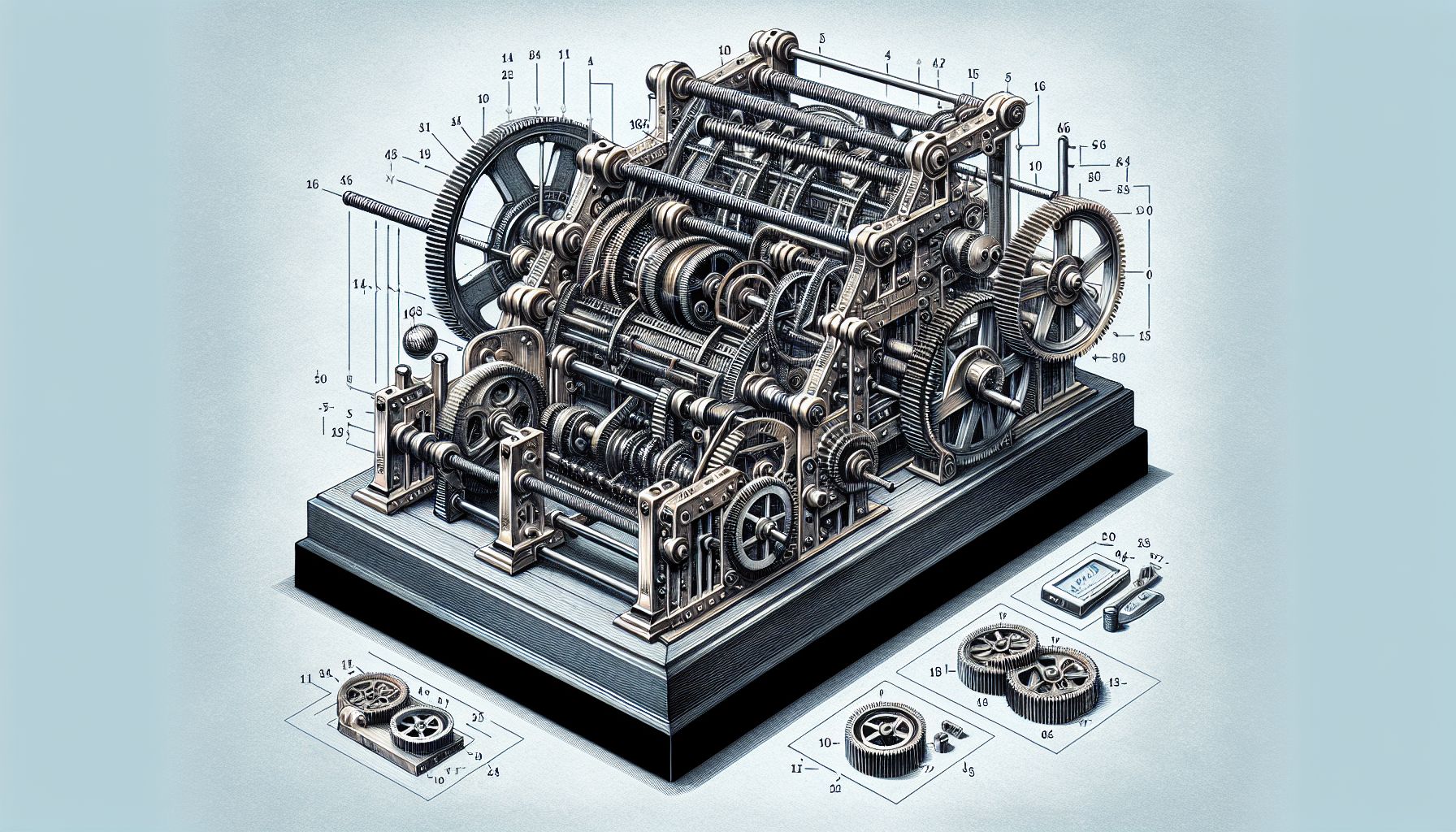📌 Let’s explore the topic in depth and see what insights we can uncover.
⚡ “Before Siri, before calculators, even before your trusty abacus, there was Gottfried Leibniz’s Step Reckoner of 1673. Get ready to take a thrilling journey back in time to meet the great-grandfather of automatic calculation!”
Welcome to the world of historical computation, where we wind back the clock to explore the origins of technology that has changed our lives forever. Today, we turn our gaze to the 17th century, a period when the concept of a machine performing calculations was just budding. Our protagonist is Gottfried Wilhelm Leibniz, a German polymath and philosopher, best known for developing differential and integral calculus (independently of Isaac Newton). But today, we will focus on one of his lesser-known but equally groundbreaking inventions: the Step Reckoner. 📎 Launched in 1673, the Step Reckoner was a mechanical calculator that set the foundation for future developments in the field of computation. But what made this machine so special? How did it work? And what impact did it have on the evolution of computing? Let’s step into the history of automatic calculation and unravel the mystery of Leibniz’s Step Reckoner. 🕵️♂️
🎩 Who Was Gottfried Leibniz?

"Leibniz's Step Reckoner: The Dawn of Automatic Calculation"
Before we delve into the workings of the Step Reckoner, it’s crucial to understand the man behind the machine. Born on July 1, 1646, in Leipzig, Germany, Leibniz was a true polymath who made significant contributions to a variety of fields, including philosophy, law, history, politics, and of course, mathematics and computation. Leibniz’s work in the realm of computation was heavily influenced by the technological developments of his era. The mid-17th century was a time of great innovation in the field of mechanical calculation, with pioneers like Blaise Pascal and Thomas Hobson creating early calculating machines. However, these machines were limited to addition and subtraction. Leibniz aimed to build a device that could perform all four basic arithmetic operations: addition, subtraction, multiplication, and division. This ambition led to the creation of the Step Reckoner.
🛠️ The Design and Operation of the Step Reckoner
The Step Reckoner, also called the Leibniz Wheel or the Leibniz Calculator, was a sophisticated piece of machinery for its time. It was a robust, hand-cranked device built of brass, steel and iron, about two feet long, one foot wide, and six inches high. At the heart of the machine was a unique cylindrical mechanism known as the Leibniz wheel, which allowed it to carry out multiplication and division, in addition to addition and subtraction. The Leibniz wheel was an innovative stepped drum or stepped cylinder, a crucial component that set the Step Reckoner apart from its contemporaries.
Here’s how it worked:
Each Leibniz wheel had nine teeth of varying lengths. — let’s dive into it. When a user turned the crank, the wheels could engage with a counting mechanism to add or subtract numbers. — let’s dive into it. For multiplication and division, the machine would perform repeated additions or subtractions. For example, to multiply 5 by 3, the machine would add 5 three times. — let’s dive into it. The user could input numbers using a set of dials on the front of the machine and then turn a crank to perform the calculation. The result would appear in a series of windows on top of the machine. — let’s dive into it. The Step Reckoner could handle numbers up to five digits long and perform calculations with eleven-digit results. It was a marvel of engineering and a significant leap forward in the realm of mechanical calculation.
🦾 The Impact and Legacy of the Step Reckoner
Leibniz’s Step Reckoner was far from perfect. It was a complex machine that required significant skill and patience to operate. Moreover, it was prone to mechanical errors, especially during multiplication and division. Despite these limitations, the Step Reckoner was a revolutionary step forward in the field of computation. It was the first machine capable of performing all four basic arithmetic operations, laying the groundwork for future developments in automatic calculation. The Step Reckoner’s most significant contribution was probably the Leibniz wheel, which would later become a fundamental component in mechanical calculators until the advent of electronic computers in the 20th century. Indeed, many early computer scientists, such as Charles Babbage, were inspired by Leibniz’s work. Moreover, Leibniz’s vision extended beyond the Step Reckoner. He dreamed of creating a universal calculating machine that could solve all mathematical problems, a concept that closely aligns with the modern notion of a computer. In this sense, Leibniz can be seen as a true pioneer of computing.
🧭 Conclusion
Gottfried Leibniz’s Step Reckoner was an extraordinary invention that marked a significant milestone in the history of computing. Despite its limitations and complexities, it was the first machine capable of performing all four basic arithmetic operations and laid the groundwork for future developments in automatic calculation. More than just a calculating machine, the Step Reckoner was a testament to Leibniz’s pioneering vision of a universal calculating machine. His dream foretold the rise of modern computers, making him a true prophet of the digital age. So, the next time you use your smartphone or laptop, remember the humble origins of these powerful devices in the form of Leibniz’s Step Reckoner. As we continue to explore the ever-evolving world of technology, we can’t help but marvel at how far we’ve come since Leibniz’s time. Yet, it’s crucial to remember that these advances are built on the foundations laid by pioneers like Leibniz. After all, every step counts in the journey of progress.
🌐 Thanks for reading — more tech trends coming soon!
